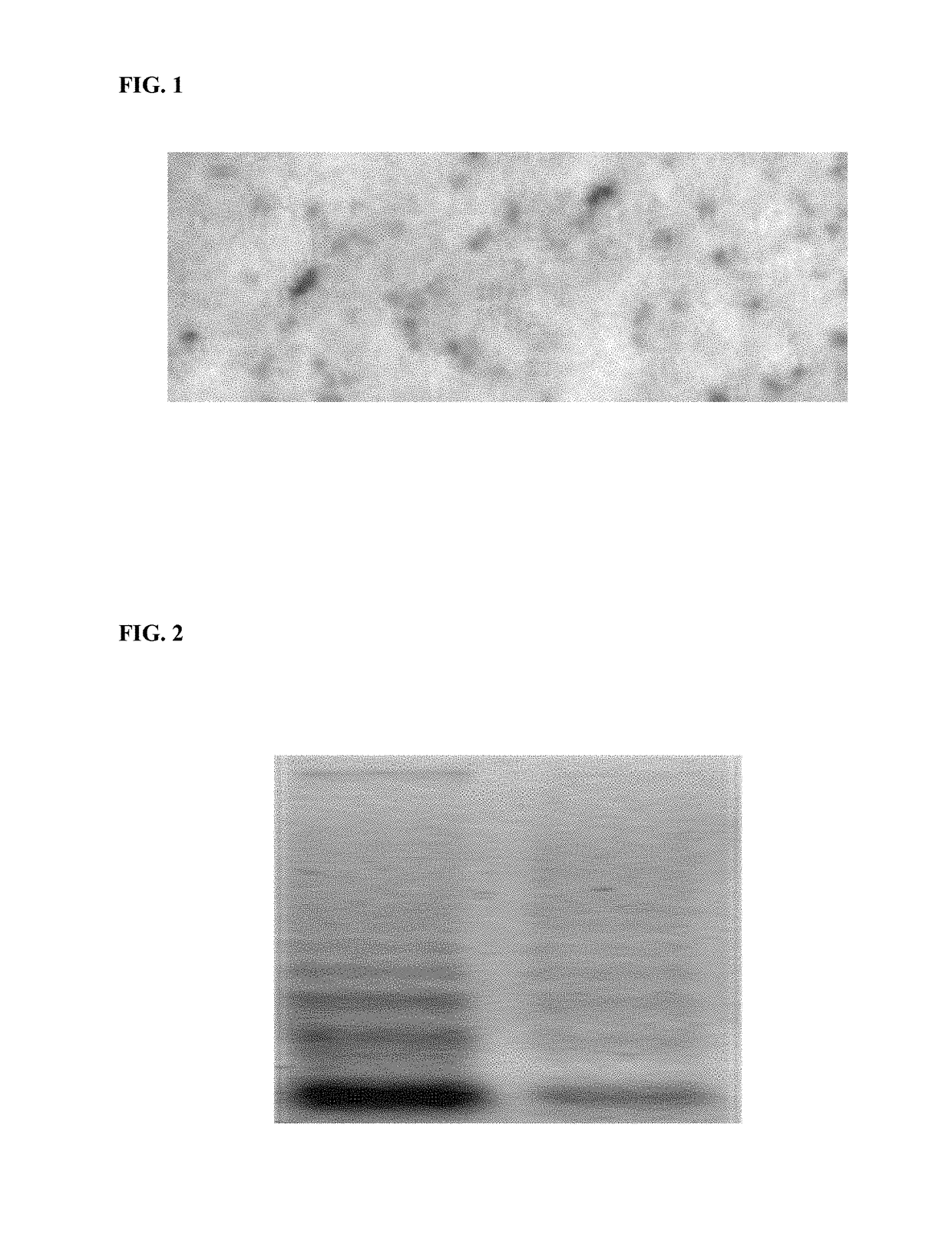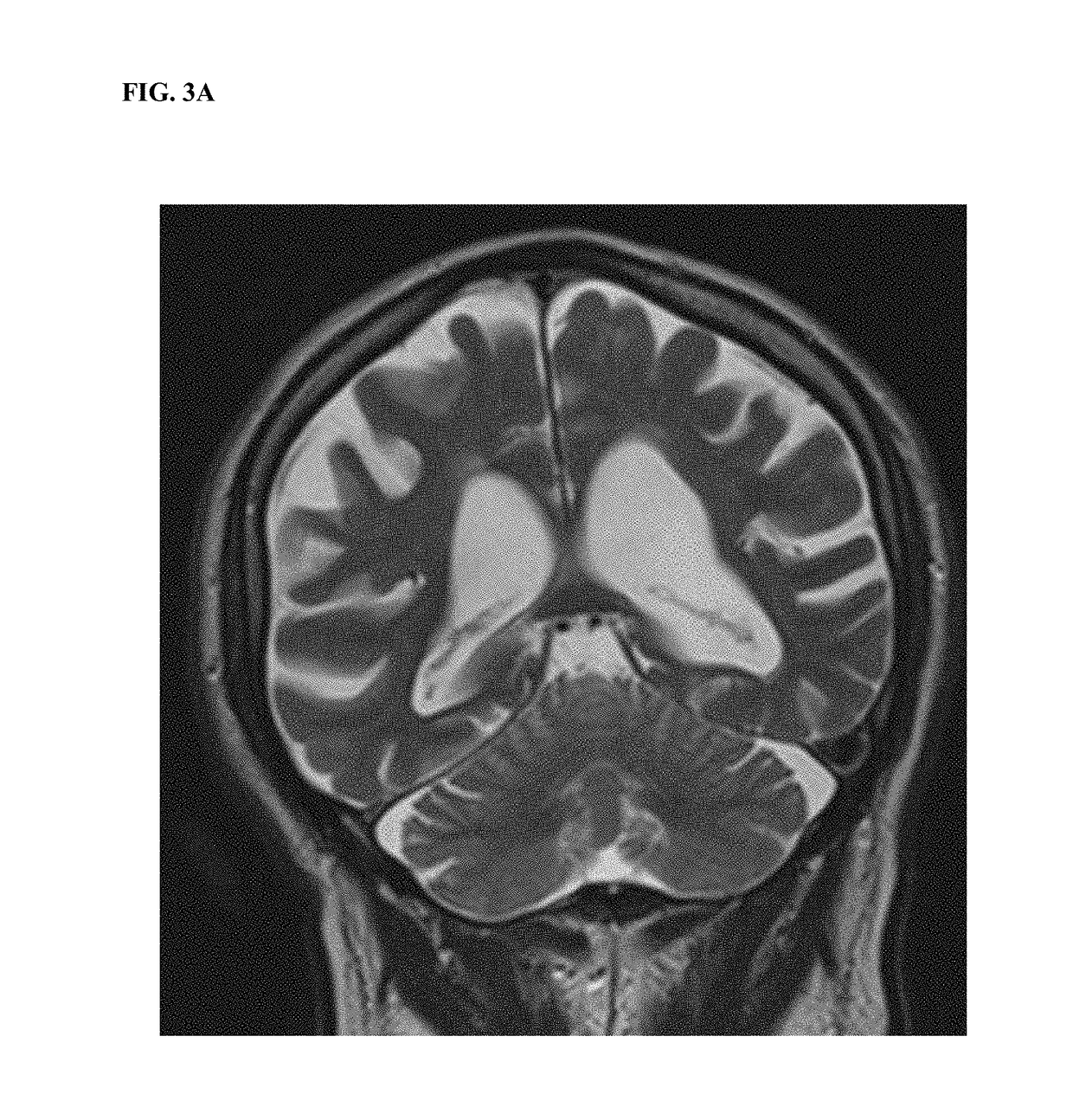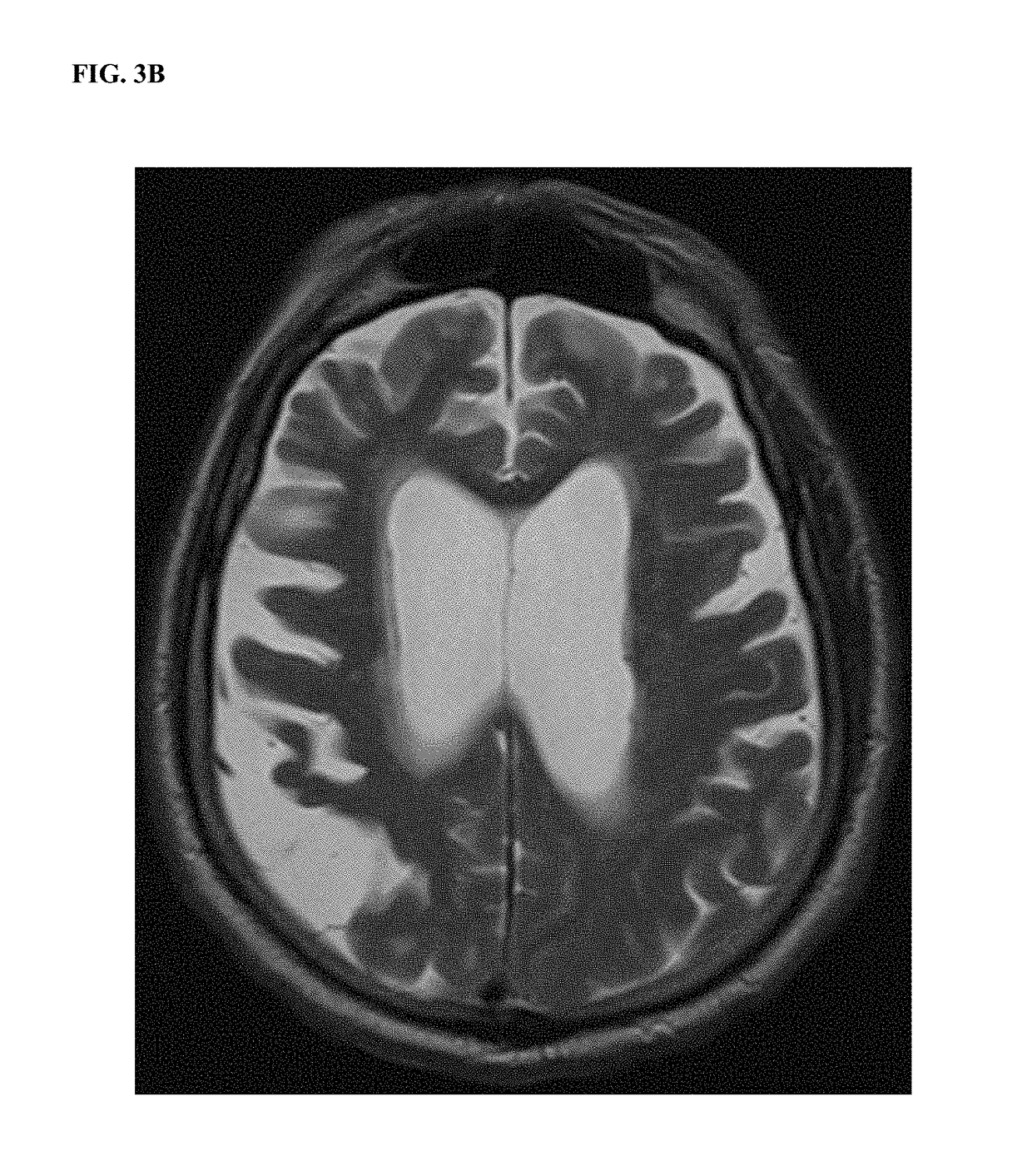Extracellular DNA as a therapeutic target in neurodegeneration
a neurodegeneration and extracellular dna technology, applied in the field of deoxyribonuclease (dnase) enzyme, can solve the problems of progressive nervous system dysfunction, disability and death, and achieve the effect of reducing the average molecular weigh
- Summary
- Abstract
- Description
- Claims
- Application Information
AI Technical Summary
Benefits of technology
Problems solved by technology
Method used
Image
Examples
example 1
ular Circulating DNA from Blood and CSF Promotes Neuronal Cell Death
[0084]For neuronal cultures, cerebral cortices were removed from embryonic day (E) 15-17 Sprague Dawley rat embryos. Cortical explants were dissected into pieces of about 200-400 μm2 using fine needles and dissociated with the Papain Dissociation System (Worthington Biochemicals) according to the manufacturer's instructions and further kept on ice-cold minimum essential medium (Gibco). Neurons were plated on 13 mm diameter glass coverslips coated first with poly-D-lysine (10 μg / ml in PBS) followed by laminin (10 μg / ml in PBS) (Gibco) and cultured at 37° C. in a humidified 8% CO2 (v / v) atmosphere for 24-48 hrs in Neurobasal medium with 1% (v / v) Antibiotic-Antimycotic (Gibco).
[0085]Extracellular DNA was extracted from plasma and CSF of a patient with a severe stage of Alzheimer's disease using QIAamp Circulating Nucleic Acid Kit according to manufacturers' instructions. In order to assess biological effect of such ext...
example 2
n of Bacterial Extracellular DNA in Blood and CSF of a Patient with Alzheimer's Disease
[0088]Extracellular DNA was extracted from plasma and CSF of a patient with a severe stage of Alzheimer's disease and a healthy volunteer (age- and sex-matched) using QIAamp Circulating Nucleic Acid Kit according to manufacturers' instructions. Quantification of bacterial extracellular DNA was done using CFX96 Touch™ Real-Time PCR Detection System. We have used universal bacterial DNA PCR primers 1369F and 1492R (Bacterial 16S rRNA).
1369F (SEQ ID NO: 1)CGGTGAATACGTTCYCGG1492R (SEQ ID NO: 2)GGWTACCTTGTTACGACTT
[0089]The threshold cycles are presented in the table below:
TABLE 2GroupSampleCqAlzheimer's diseaseSerum16.45CSF18.10Healthy volunteersSerum31.12CSF29.09
[0090]As follows from the data in Table 2, serum and CSF of a patient with a severe stage of Alzheimer's disease contains significantly more bacterial DNA as compared to a healthy volunteer.
example 3
ular Circulating DNA from Blood Penetrates the Blood Brain Barrier
[0091]Extracellular DNA was extracted from plasma of a patient diagnosed with senile dementia using QIAamp Circulating Nucleic Acid Kit. Iodination of extracellular DNA was performed using Iodo-Gen reagent as described (Piatyszek A., et al., Analytical Biochemistry, 1988, V172, pp. 356-359). Specific activity of labeled extracellular DNA was approximately 30 mkCi / mkg. The preparation of labeled extracellular DNA in 1 ml of PBS solution (approx. 3.0 mkCi, 100 ng) was slowly infused (0.1 ml / mn) into carotid artery of an anesthetized female Sprague Dawley rat. In one hour, the rat was euthanized with chloroform, the brain was removed and fixed in formalin solution. Paraffin sections were stained with Ilford L4 emulsion. Accumulation of the labeled extracellular DNA in brain was studied using standard visual histoautoradiographic technique (FIG. 1). Accumulation of injected extracellular DNA in rat brain parenchyma indica...
PUM
| Property | Measurement | Unit |
|---|---|---|
| concentrations | aaaaa | aaaaa |
| diameter | aaaaa | aaaaa |
| real time PCR | aaaaa | aaaaa |
Abstract
Description
Claims
Application Information
 Login to View More
Login to View More - R&D
- Intellectual Property
- Life Sciences
- Materials
- Tech Scout
- Unparalleled Data Quality
- Higher Quality Content
- 60% Fewer Hallucinations
Browse by: Latest US Patents, China's latest patents, Technical Efficacy Thesaurus, Application Domain, Technology Topic, Popular Technical Reports.
© 2025 PatSnap. All rights reserved.Legal|Privacy policy|Modern Slavery Act Transparency Statement|Sitemap|About US| Contact US: help@patsnap.com



